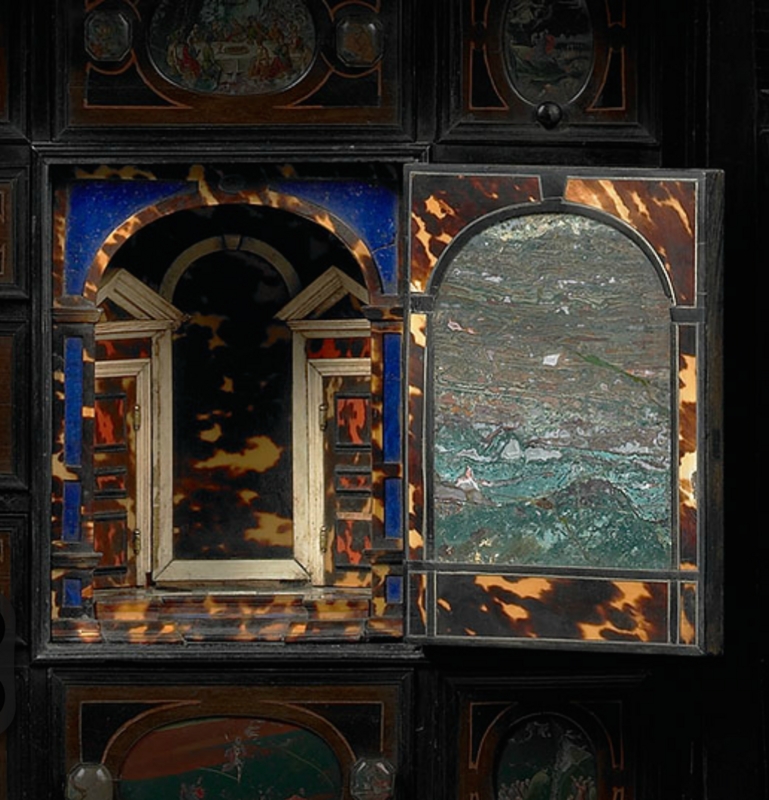Introduction
Display cabinet: Unknown maker; three carvings by Albert Jansz; Kunstschranck, 1620-1630. Cabinet: ebony, chestnut, walnut, pearwood, boxwood, ivory, marble, semiprecious stones, enamel, palm wood, and tortoiseshell, 73 x 58 x 59 cm. Los Angelos, J. Paul Getty Museum.
Animation courtesy of The Getty. “Cabinet Interactive Presentation,” The Getty, accessed April 10, 2014, http://www.getty.edu/art/exhibitions/north_pavilion/cabinet/index.html
Crowned with a rich headdress of coral, shells, and stones, a dark ebony box quietly keeps its secrets behind elaborate doors. Marble insets surround the exterior, while each of the four interior sides feature different programs.
In fact, though the sides feature extremely different materials and heterogenous depictions, there is an overall unifying grid which all follow. In each, the middle "register" is taller than the other bands as if it were the “shaft”of a column, and the top and bottom the“capitals” and “bases.” Though this may seem insignificant, such a rigid system "offered a format whose utility contributed to their persisting appeal," as argued by Barbara Stafford (note 1). For the interactive use of structured, permanent drawers and mirrors allow the user to shift around its objects, sorting them in various ways, interpreting and re-allocating meaning each along the way. In this sense the display cabinet is in itself a miniature kunstkammer, allowing the user to both experience while also defining the experience itself (note 2).
This double dialogue of a "world within a world" is further emphasized through the kunstschrank's miniature doors and windows. It is easy to imagine the delight in such an object, a microcosm within a microcosm.
Notes:
note 1. Barbara Stafford, Devices of Wonder: From the World in a Box to Images on a Screen. (Los Angeles: Getty Research Institute, 2001), 7.
note 2. To learn more about the personal interactive implications of the kunstschrank as a form of "deep play," please refer to Barbara Stafford, Devices of Wonder: From the World in a Box to Images on a Screen. (Los Angeles: Getty Research Institute, 2001), 14-16.
